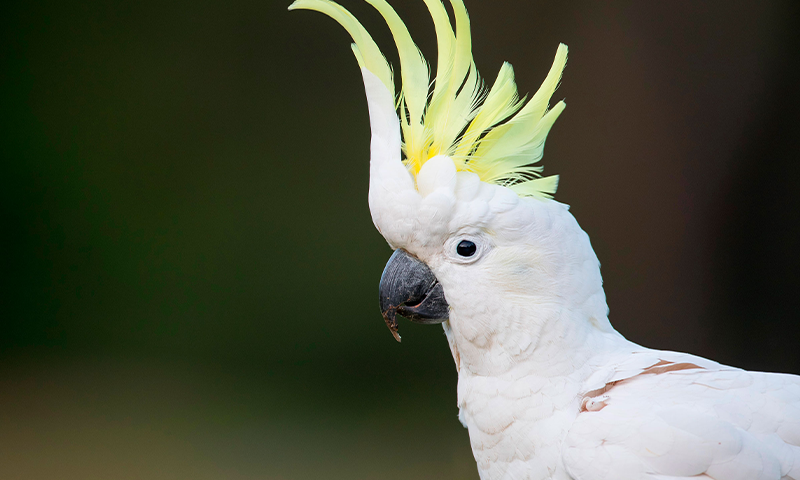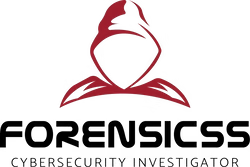-
info@forensicss.com
Send Email
-
11400 West Olympic Blvd, Los Angeles, CA 90064
310-270-0598
Confidentiality Guaranteed
310-270-0598
Confidentiality Guaranteed
Blog Details
-
ForensicsS | Private Detective & Digital Forensics Investigation Experts > News > Investigations > Feather Forensics Might well well also Help Nab Poachers

May
Feather Forensics Might well well also Help Nab Poachers
Private investigator
Be half of the free Nautilus e-newsletter:
science and tradition for those that like beautiful writing.

Every one year, the illegal plants and fauna alternate ensnares thousands and thousands of wild birds in an endless world industry. Poaching for the shadowy market affects a extensive diversity of existence, at the side of virtually half of all rooster species. Songbirds and parrots are specifically standard targets, with thousands illegally caught and traded yearly.
But proving that a rooster supplied as a pet modified into poached from the wild, barely than born in captivity, is hectic. Monitoring a rooster’s origins, says Katherine Hill, an invasive species biologist at the College of Adelaide in Australia, depends on paperwork, “that will clearly be solid barely merely.”
Over the previous couple of a long time, however, scientists were constructing a system to learn a rooster’s feathers to hint its history. Is named get isotope diagnosis, the capacity entails investigating the chemical parts saved in an animal’s tissues.
Genuine isotope diagnosis works on birds because their feathers lock in identifiable chemical signatures as they develop, rising a snapshot of a period of the rooster’s existence, Hill says. Captive birds, shall we embrace, are at possibility of use corn and sorghum. Wild birds use more fruits, nuts, and wild plant seeds. These variations in weight-reduction design alter the chemical substances within the birds’ feathers.
ADVERTISEMENT
Nautilus Contributors abilities an advert-free abilities.
Log in
or
Be half of now
.
Scientists include weak get isotope diagnosis to gape rooster diets for several years. But earlier initiatives aiming to tease out birds’ origins largely interested by a few endangered parrot species with limited diets, exiguous populations, or exiguous ranges. Hill wanted to amble looking out for if she may perhaps well furthermore practice the system to parrot species with barely mountainous geographic ranges that use a unheard of wider form of meals. In explicit, she interested by four basic Australian parrots which will most definitely be standard as pets—galahs (Eolophus roseicapilla), sulphur-crested cockatoos (Cacatua galerita), exiguous corellas (Cacatua sanguinea), and long-billed corellas (Cacatua tenuirostris).
Genuine isotope diagnosis may perhaps well furthermore precisely distinguish between wild and captive galahs virtually 90 percent of the time.
Foundation in December 2020, Hill situation out round Adelaide, the put she scanned the streets for the intriguing white, yellow, or purple shocks of wild parrot feathers. COVID-19-linked lockdowns intended it modified into hectic for Hill and her colleagues to search the advice of with zoos or aviaries to gain the feathers of captive and wild parrots. As an more than a few, they created a neighborhood-science initiative to gain the feathers of captive parrots from the public. Spreading the word through social media, local news organizations, and varied locations at possibility of get the eyes of animal followers, the scientists harnessed dozens of volunteers from all the scheme in which through South Australia who collectively despatched in thousands of feathers they chanced on within the wild or gathered from the backside of their pets’ cages. The mission modified into a system for folks to connect with nature, Hill says.
Pooling the feathers by species, and splitting them by whether they came from wild or captive birds, Hill and her colleagues chanced on that get isotope diagnosis may perhaps well furthermore precisely distinguish between wild and captive galahs virtually 90 percent of the time, and the varied parrot species 74 percent of the time. The isotope learn from those four parrot species will provide records that varied scientists can teach in future experiences as properly.
ADVERTISEMENT
Nautilus Contributors abilities an advert-free abilities.
Log in
or
Be half of now
.
The system provides a potent system to name poached birds. It’s doubtless, says Hill, to cheat the take a look at. If a captive rooster is fed a weight-reduction design much like what a wild one would use—or if wild birds include specifically various diets or access to something much like pet meals—it can perhaps perhaps well furthermore muddy the results. But when weak with varied instruments, says Hill, isotope diagnosis may perhaps well furthermore tip off regulations enforcement that a rooster may perhaps well furthermore need been poached, giving the authorities motive to compare further.
The worth of get isotope diagnosis is furthermore constrained by time, Hill says. Attributable to birds continually develop and molt their feathers, each half of plumage simplest reflects the time between molts. For many parrots, that’s a few one year. This capacity the system will most definitely be simplest at identifying birds that were captured from the wild interior that timeframe.
Astrid Andersson, a conservation biologist at the College of Hong Kong, says the effectiveness of get isotope diagnosis to tell apart between captive and wild parrots aligns with earlier learn, at the side of her include work on a Chinese language population of yellow-crested cockatoos.
“It’s truly significant to magnify the sequence of species which include this get isotope records,” says Andersson. Utterly different species need their very include get isotope datasets, she says. “We desire to design up the database that authorities may perhaps well furthermore potentially take a look at with.”
ADVERTISEMENT
Nautilus Contributors abilities an advert-free abilities.
Log in
or
Be half of now
.
Natural world authorities don’t many times teach get isotope diagnosis of their investigations and, to this level, the system isn’t being continually weak in rooster-poaching investigations. But inspecting feathers on the final is a ambitious new software within the anti-poaching toolbox, says Kate Brandis, a plants and fauna forensics educated at the College of Peaceful South Wales in Australia. “Right here’s aloof a constructing put,” she says. But learn cherish Hill’s is “demonstrating that this does include a situation in combating the illegal plants and fauna alternate.” ![]()
This story firstly put looked in bioGraphic, an neutral magazine about nature and regeneration powered by the California Academy of Sciences.
Lead checklist: Agami Portray Company / Shutterstock
Jude Coleman
Posted on
Jude Coleman is an Oregon-based fully, freelance science creator who covers themes each severe and uncommon. Her words include looked in retail outlets such as The Peaceful York Times, Nature, National Geographic, Scientific American, and others.
![]()
Catch the Nautilus e-newsletter
Chopping-edge science, unraveled by the very brightest residing thinkers.
Recent Posts
- Ethiopian Migrants Face Kidnappings and Death, Leaving Within the aid of Heartbroken Households
- Andrew Tate Hits TikTok & Zuckerberg’s Meta For $100M For Kicking Ex-Kickboxer Off Platforms Support In 2022: “It’s Correct Vs Inappropriate,” Accused Rapist Insists
- Conservatives mock Comey over Taylor Swift video
- The generation of AI hacking has arrived
- Hackers unleash torrent from Norwegian dam, releasing 132 gallons per 2nd for four hours

